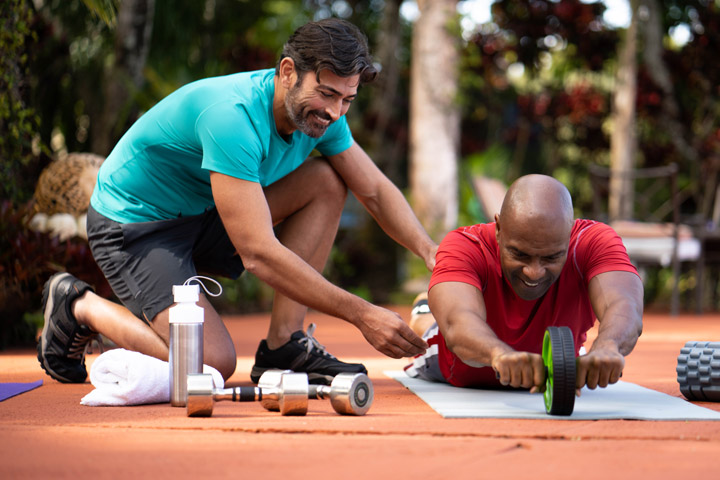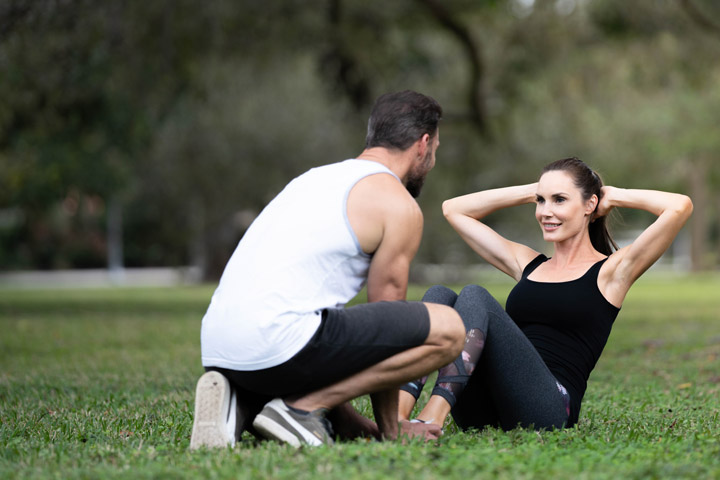23 Sep 2020
Walk Your Way To A Longer Life
Estimated read time: 4 minutes, 19 seconds
There’s never been a better time to walk or run. Since the COVID-19 pandemic has closed gyms and forced us to spend much more time at home, these two activities have become pillars of both health and leisure, in the absence of other social activities. It’s a chance to move, be in contact with nature, and feel safe outside. It’s free and doesn’t require a team or special training—but it does require willpower and perseverance.
The benefits are surprising. Walking at least 30 minutes every day can increase cardiovascular fitness, strengthen the bones, reduce excess body fat and improve muscle strength and resistance. It can also reduce the risk of developing chronic conditions such as heart disease, type 2 diabetes, osteoporosis, and some types of cancer.
General health guidelines recommend spending at least two and a half hours a week on moderate-intensity activities. For many people, this means walking. But even if you aren’t able to reach those 150 minutes recommended by experts, establishing a regular walking routine can extend your life.

Running regularly is associated with:
- Up to 25% reduction in the risk of breast cancer
- Up to 50% reduction in the risk of stomach cancer
- 19% less risk of developing depression
- 50% less risk of experiencing serious heart events
A study conducted with 299 older adults, published in the journal Neurology, found that walking was associated with a greater volume of gray matter in the brain, which is a measurement of brain health.
Running regularly is associated with:
- Up to 25% reduction in the risk of breast cancer
- Up to 50% reduction in the risk of stomach cancer
- 19% less risk of developing depression
- 50% less risk of experiencing serious heart events
Practical Tips for Avoiding Failure
- Be realistic. If your goal of walking 30 minutes per day or running regularly is difficult to meet because of a lack of time or endurance, try to get at least 75 minutes a week. Either way, there will be a positive impact on your health. It’s always good to consult your primary care doctor about your exercise plan to make sure you’re doing it responsibly and avoid stressing your body.
- Plan out your route. For the best chance of success, we recommend planning out your walk or run, not simply circling the block. Your route can center on a plaza, park, or space that provides pleasant views while you exercise. Changing your route so you don’t get bored and bringing a friend, partner, or family member can boost your energy and strengthen your commitment. But just because you’ve got company doesn’t mean you have to talk the whole walk or run. This can tire you out and speed up your heart rate.
- Use a pedometer or phone app to measure your step count. Measure your movements throughout the day and compare it to other days or recommended amounts as an incentive. The recommended number of steps per day to achieve health benefits is 10,000 or more.

Our bodies tend to get used to physical activity, so it’s best to increase the intensity as your physical condition improves. Here are some ways you can do this:
- Going up ramps, hills or steep streets
- Walking while carrying small weights or water bottles filled with water
- Gradually increasing your speed with quick steps
- Doing longer intervals of fast walking before returning to a moderate pace
- Walking for longer times
Another study published in 2017 in the International Journal of Obesity confirmed that people who walk more and spend less time sitting down have a lower Body Mass Index (BMI). This index is calculated by dividing your weight by your height squared (BMI = weight (kg) / [height (m)]2). The result indicates whether you are overweight or obese: BMI above 25.0 is considered overweight. In the study, people who walked or ran 15,000 steps or more per day tended to have BMIs in the normal and healthy range.
Other Proven Benefits of Walking and Running
- Reducing stress and improving mood. Just like other types of aerobic exercise, walking, especially through nature, stimulates the production of neurotransmitters in the brain (endorphins), which help improve mental health. Feeling better in your own body can help improve self-esteem and self-confidence.
- Lengthening your lifespan. Researchers have found that walking for about 3 hours a week or running consistently can be associated with a 11% decrease in the risk of premature death compared to people who lead sedentary lives.
How to Prevent Complications
It’s very important to consult your doctor before starting to walk or run, especially if you have any preexisting conditions or joint problems. This doesn’t mean you can’t do any physical activity, but a doctor will be able to tell you the best way to do it.
It’s important to warm up by stretching the legs and entire body, in order to avoid muscle cramps, and to increase your physical activity gradually, never suddenly. The health benefits will be the same.
Lastly, it’s essential to wear proper shoes and avoid walking or running on uneven or hard surfaces, like cement. Always try to find paths made of dirt or in parks. Maintain social distance and wear a mask whenever possible.
A consistent walking plan during these dangerous times for physical and mental health might even save your life.
Sources:National Walkers’ Health Study, “The Relationship of Walking Intensity to Total and Cause-Specific Mortality, Harvard Medical School, “Walking: Your steps to health”, American Heart Association (AHA), National Institute of Blood, Lung and Heart, British Journal of Sports Medicine, “What is the optimal type of physical activity to enhance health?”


